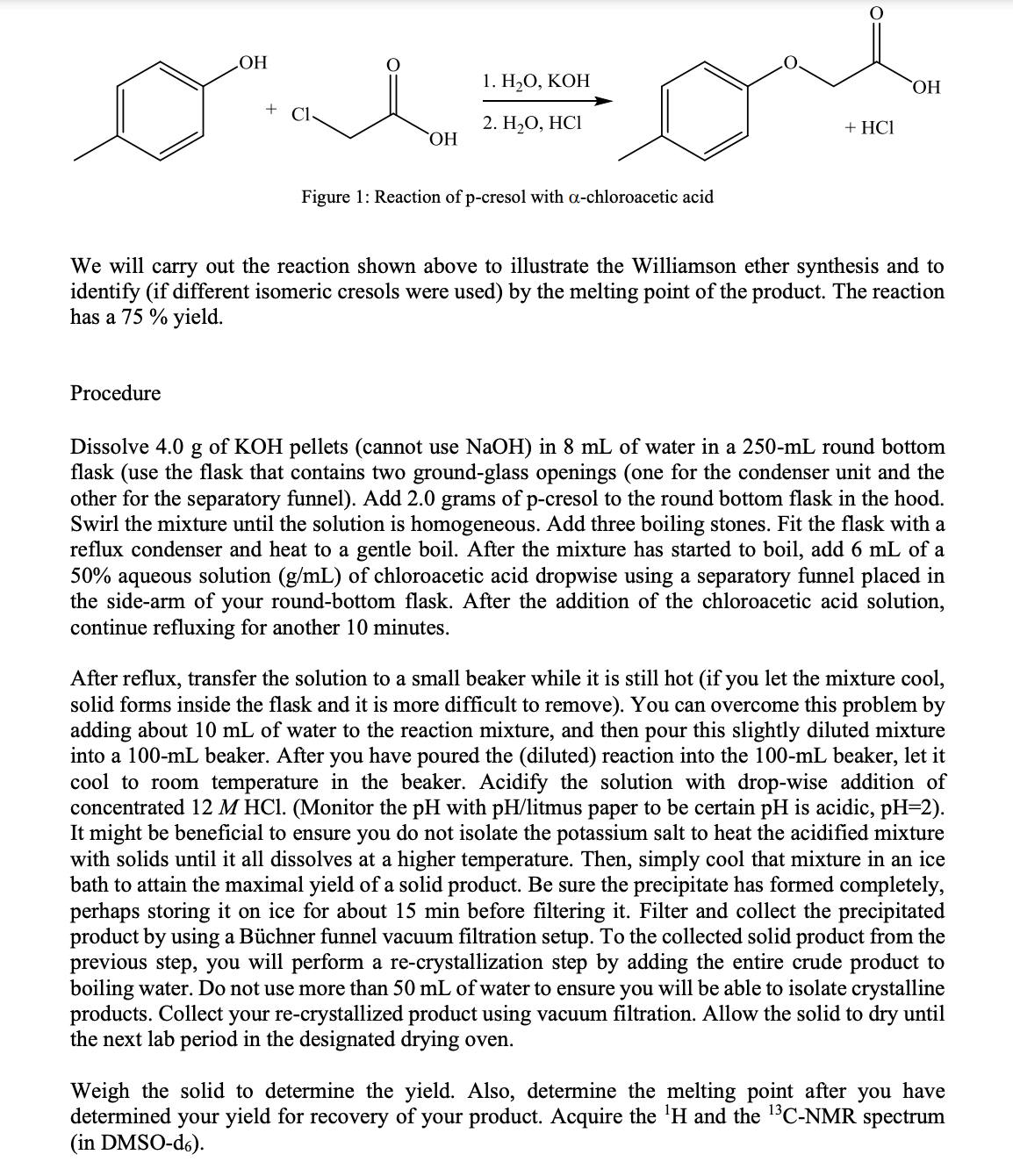1. Potassium hydroxide reacts with a-naphthol to form the potassium salt. Can potassium butoxide, the potassium salt of butanol be formed the same way? If not, what is an effective way to produce potassium butoxide which can be used organic reactions?
1. Potassium hydroxide reacts with a-naphthol to form the potassium salt. Can potassium butoxide, the potassium salt of butanol be formed the same way? If not, what is an effective way to produce potassium butoxide which can be used organic reactions?
Chemistry for Today: General, Organic, and Biochemistry
9th Edition
ISBN:9781305960060
Author:Spencer L. Seager, Michael R. Slabaugh, Maren S. Hansen
Publisher:Spencer L. Seager, Michael R. Slabaugh, Maren S. Hansen
Chapter14: Aldehydes And Ketones
Section: Chapter Questions
Problem 14.63E: Vanilla flavoring is either extracted from a tropical orchid or synthetically produced from wood...
Related questions
Question

Transcribed Image Text:1. Potassium hydroxide reacts with a-naphthol to form the potassium salt. Can potassium butoxide,
the potassium salt of butanol be formed the same way? If not, what is an effective way to produce
potassium butoxide which can be used in organic reactions?

Transcribed Image Text:НО
1. Н,О, КОН
+
2. Н,О, НСІ
+ HCІ
HO,
Figure 1: Reaction of p-cresol with a-chloroacetic acid
We will carry out the reaction shown above to illustrate the Williamson ether synthesis and to
identify (if different isomeric cresols were used) by the melting point of the product. The reaction
has a 75 % yield.
Procedure
Dissolve 4.0
g
of KOH pellets (cannot use NaOH) in 8 mL of water in a 250-mL round bottom
flask (use the flask that contains two ground-glass openings (one for the condenser unit and the
other for the separatory funnel). Add 2.0 grams of p-cresol to the round bottom flask in the hood.
Swirl the mixture until the solution is homogeneous. Add three boiling stones. Fit the flask with a
reflux condenser and heat to a gentle boil. After the mixture has started to boil, add 6 mL of a
50% aqueous solution (g/mL) of chloroacetic acid dropwise using a separatory funnel placed in
the side-arm of your round-bottom flask. After the addition of the chloroacetic acid solution,
continue refluxing for another 10 minutes.
After reflux, transfer the solution to a small beaker while it is still hot (if you let the mixture cool,
solid forms inside the flask and it is more difficult to remove). You can overcome this problem by
adding about 10 mL of water to the reaction mixture, and then pour this slightly diluted mixture
into a 100-mL beaker. After you have poured the (diluted) reaction into the 100-mL beaker, let it
cool to room temperature in the beaker. Acidify the solution with drop-wise addition of
concentrated 12 M HCI. (Monitor the pH with pH/litmus paper to be certain pH is acidic, pH=2).
It might be beneficial to ensure you do not isolate the potassium salt to heat the acidified mixture
with solids until it all dissolves at a higher temperature. Then, simply cool that mixture in an ice
bath to attain the maximal yield of a solid product. Be sure the precipitate has formed completely,
perhaps storing it on ice for about 15 min before filtering it. Filter and collect the precipitated
product by using a Büchner funnel vacuum filtration setup. To the collected solid product from the
previous step, you will perform a re-crystallization step by adding the entire crude product to
boiling water. Do not use more than 50 mL of water to ensure you will be able to isolate crystalline
products. Collect your re-crystallized product using vacuum filtration. Allow the solid to dry until
the next lab period in the designated drying oven.
Weigh the solid to determine the yield. Also, determine the melting point after you have
determined your yield for recovery of your product. Acquire the 'H and the 1C-NMR spectrum
(in DMSO-ds).
Expert Solution
This question has been solved!
Explore an expertly crafted, step-by-step solution for a thorough understanding of key concepts.
This is a popular solution!
Trending now
This is a popular solution!
Step by step
Solved in 4 steps with 5 images

Recommended textbooks for you

Chemistry for Today: General, Organic, and Bioche…
Chemistry
ISBN:
9781305960060
Author:
Spencer L. Seager, Michael R. Slabaugh, Maren S. Hansen
Publisher:
Cengage Learning

Chemistry for Today: General, Organic, and Bioche…
Chemistry
ISBN:
9781305960060
Author:
Spencer L. Seager, Michael R. Slabaugh, Maren S. Hansen
Publisher:
Cengage Learning